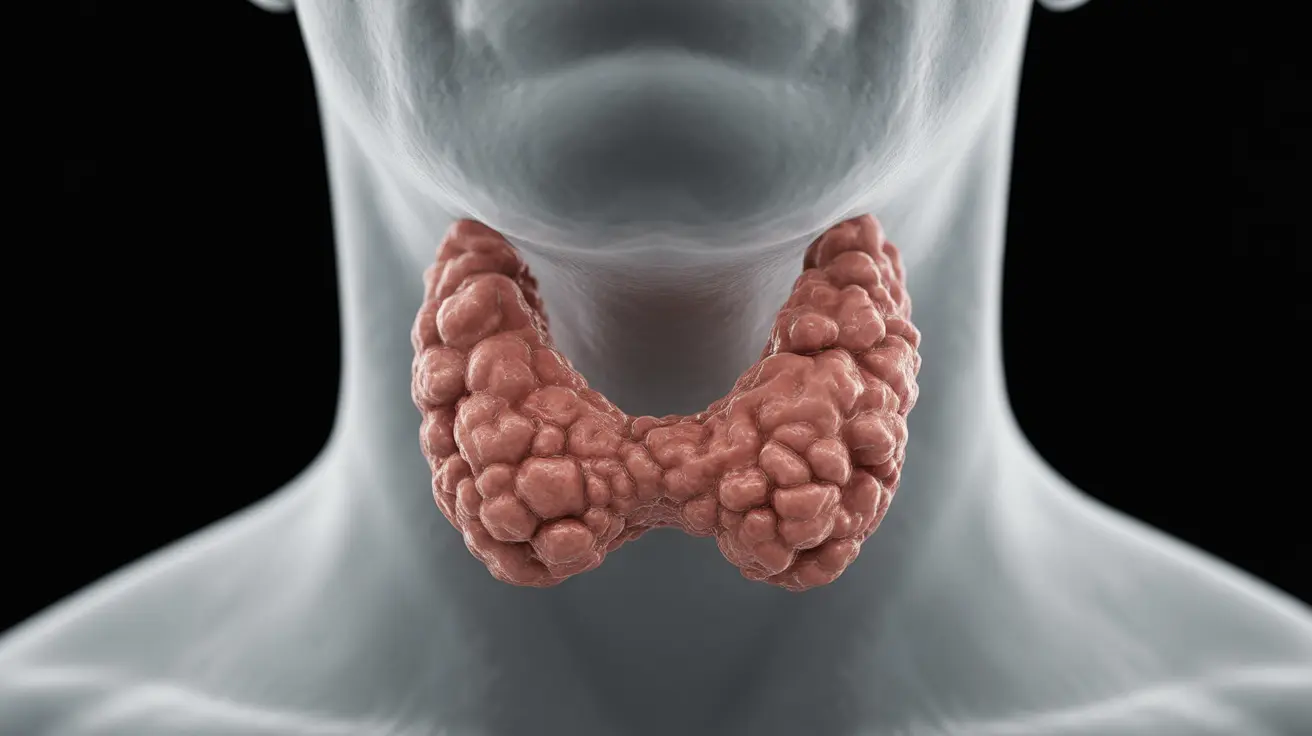A multinodular goiter is a condition where multiple nodules or lumps develop in the thyroid gland, causing it to become enlarged. This common thyroid disorder can affect people of any age but is more prevalent in certain populations. Understanding its causes, symptoms, and available treatments is crucial for proper management and preventing potential complications.
While many multinodular goiters are benign and develop slowly over time, they can sometimes affect thyroid function or cause discomfort. This comprehensive guide will help you understand what you need to know about this condition and when to seek medical attention.
What Is a Multinodular Goiter?
A multinodular goiter occurs when multiple nodules form within the thyroid gland, leading to its enlargement. These nodules can vary in size and may be solid or fluid-filled. The condition can develop gradually over years and may affect thyroid function, though many people maintain normal thyroid hormone levels despite having a goiter.
Risk Factors and Causes
Several factors can contribute to the development of multinodular goiter:
- Iodine deficiency
- Family history of thyroid disorders
- Being female (women are more commonly affected)
- Age (risk increases with age)
- Radiation exposure to the neck area
- Certain medications or medical conditions
Common Symptoms and Warning Signs
The symptoms of multinodular goiter can vary significantly among individuals. Some people may experience no noticeable symptoms, while others might develop several:
- Visible neck swelling
- Difficulty swallowing
- Hoarseness or voice changes
- Breathing problems, especially when lying flat
- Feeling of pressure in the neck
- Coughing
Diagnosis Process
Healthcare providers use several methods to diagnose multinodular goiter:
Physical Examination
The doctor will carefully examine your neck, looking for visible enlargement and feeling for nodules.
Diagnostic Tests
Common diagnostic procedures include:
- Thyroid function blood tests
- Ultrasound imaging
- Fine-needle aspiration biopsy
- Thyroid scan (when necessary)
- CT scan or MRI (in specific cases)
Treatment Approaches
Treatment options for multinodular goiter depend on various factors, including size, symptoms, and whether the nodules affect thyroid function:
Watchful Waiting
For small, asymptomatic goiters with normal thyroid function, regular monitoring may be sufficient.
Medication
Thyroid hormone replacement therapy might be prescribed to suppress further growth or manage thyroid function.
Surgery
Surgical removal (thyroidectomy) may be recommended for large goiters, suspicious nodules, or when compression symptoms occur.
Radioactive Iodine
This treatment might be appropriate for some patients, particularly those who aren't good candidates for surgery.
Frequently Asked Questions
What causes a multinodular goiter and who is most at risk of developing it? Multinodular goiter is primarily caused by iodine deficiency, genetic factors, and hormonal changes. Women, older adults, and people with a family history of thyroid disorders are at higher risk.
What are the common symptoms of a multinodular goiter and when should I see a doctor? Common symptoms include neck swelling, difficulty swallowing, voice changes, and breathing problems. See a doctor if you notice any neck swelling or experience compression symptoms.
How is a multinodular goiter diagnosed and what tests are involved? Diagnosis typically involves physical examination, thyroid function blood tests, ultrasound imaging, and sometimes fine-needle aspiration biopsy. Additional imaging tests may be required in some cases.
What treatment options are available for multinodular goiter and how do doctors decide which to use? Treatment options include monitoring, medication, surgery, or radioactive iodine. The choice depends on goiter size, symptoms, thyroid function, and individual patient factors.
Can a multinodular goiter lead to complications like thyroid cancer or breathing problems? Yes, multinodular goiter can potentially cause complications including breathing difficulties, swallowing problems, and in rare cases, may contain cancerous nodules. Regular monitoring and appropriate treatment help prevent these complications.




